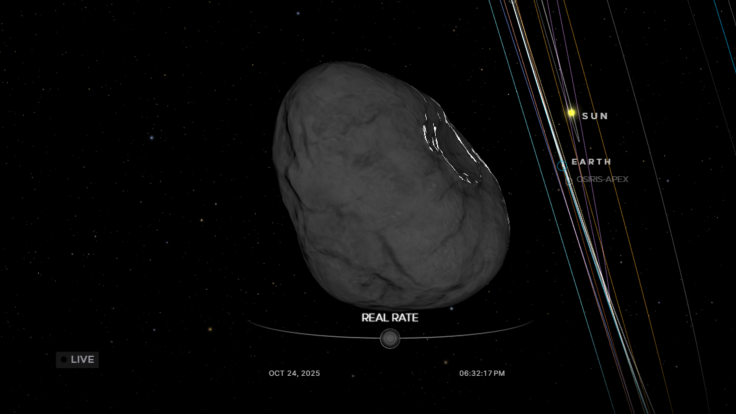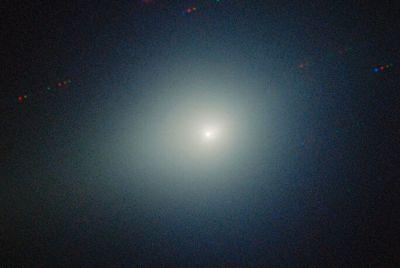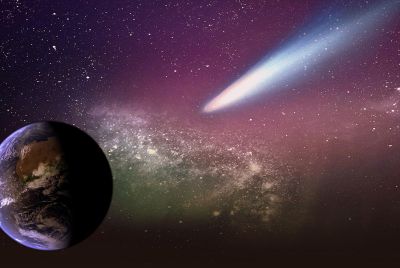3I/ATLAS Tail Flips: Interstellar Visitor Could Be Actively Controlling Its Path - Is It An Alien Mothership?
Interstellar object 3I/ATLAS shocked astronomers by flipping its dust tail's direction as it nears the Sun

Astronomers studying the interstellar object 3I/ATLAS have observed a striking change in its appearance. The body, which entered the Solar System earlier this year, appears to have reversed the direction of its dust tail as it moved closer to the Sun. The unexpected shift has prompted renewed debate among researchers about the object's origins and behaviour.
The first observations showed 3I/ATLAS displaying a rare 'anti-tail', a plume of dust pointing towards the Sun rather than away from it. Such a configuration is extremely unusual for a comet, whose dust is normally blown in the opposite direction by solar radiation. In recent months, however, astronomers have reported that the anti-tail has evolved into a conventional tail aligned away from the Sun.
Some scientists believe the shift can be explained by natural dust dynamics. Others, including Harvard astrophysicist Avi Loeb, have proposed that it might reflect some degree of controlled movement. The discussion has reignited interest in whether 3I/ATLAS could be more than a comet.
What Observations Have Revealed
Initial data collected in July and August 2025 showed that the tail of 3I/ATLAS was directed towards the Sun. A pre-print study published on arXiv noted that the object's elongated coma resembled a tail but was oriented opposite to what cometary models would predict. By September, observations from the Nordic Optical Telescope suggested the dust plume had shifted, forming a typical anti solar tail.
Spectroscopic analysis indicated that carbon dioxide may be driving most of the outgassing, influencing how particles are released from the surface. Loeb argued that if 3I/ATLAS were an artificial craft, the anti-tail could represent braking thrust as it slowed down, while the later tail might show resumed forward motion. However, most experts caution that dust-grain size, slow ejection velocity and changing solar angles are enough to explain the changes without invoking technology.
The phenomenon has inspired contrasting interpretations, with one group of researchers suggesting that 3I/ATLAS might even be a form of spacecraft.
Why Some Call It a 'Mothership'
Loeb and a small number of colleagues have suggested that 3I/ATLAS's unusual orbit, size and tail morphology merit further investigation as a possible technosignature. They point out that the object follows a retrograde orbit aligned with the ecliptic plane, which is rare for interstellar visitors.
Mainstream astronomers reject the mothership interpretation. Anti-tails have been recorded in several Solar System comets, and physical modelling can reproduce the tail reversal using standard dust physics, according to IFLScience. As one peer commentary explained, dust particles can sometimes be released at different angles, giving the illusion that a tail faces the Sun. The current evidence, they argue, fits well within known cometary behaviour.
3i/Atlas is alien tech. Here you will find the direct confirmation.🧐🤔🛸🛸🛸🛸🛸🛸🛸 pic.twitter.com/4VS9Anq1nb
— UFO mania (@maniaUFO) October 15, 2025
New images from the Nordic Optical Telescope in the Canary Islands confirm the shift.
— All day Astronomy (@forallcurious) October 22, 2025
Between July and September 2025, 3I/ATLAS transitioned from ejecting material toward the Sun to ejecting it away.
A complete inversion of its mass-flow geometry. pic.twitter.com/puq8fkFAwk
3I Atlas Anomalies
— Mystery Diver (@MysteryDiverX) October 29, 2025
Too Fast
Too Bright
Anti-Tail
Along Solar Plane
Surface Colors Are Changing
Almost No Rotation
Nickel But Almost Not Iron
Hyperbolic Course
Origin From Sagittarius "WOW!" Signal https://t.co/JgHA2umkyu pic.twitter.com/CmyKPupUBz
What Happens Next
3I/ATLAS is expected to reach perihelion, its closest point to the Sun, on 29 October 2025 at about 1.35 astronomical units. The timing makes ground-based observation difficult because the object will be near the Sun's glare, but researchers hope to gather new data once visibility improves. Space-based instruments may also help confirm whether its trajectory or outgassing patterns deviate from natural models.
The tail flip remains a fascinating clue, but one that still fits within natural explanations. As astronomers prepare for its next close pass, the case continues to test how science interprets the unexpected between the stars.
© Copyright IBTimes 2025. All rights reserved.




















